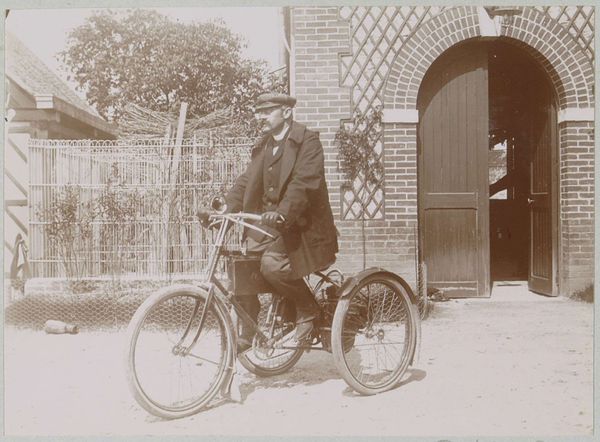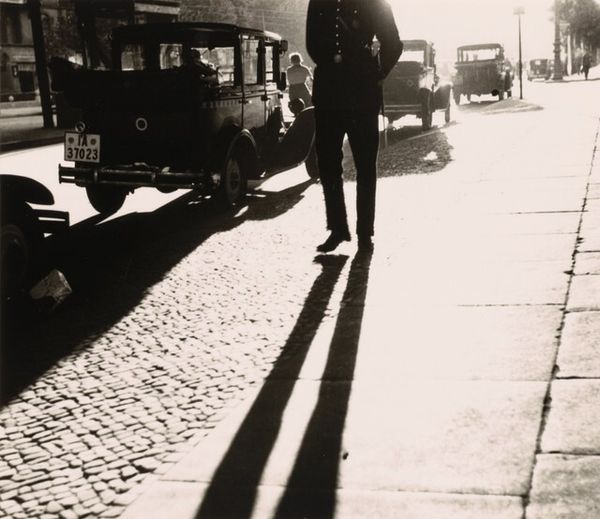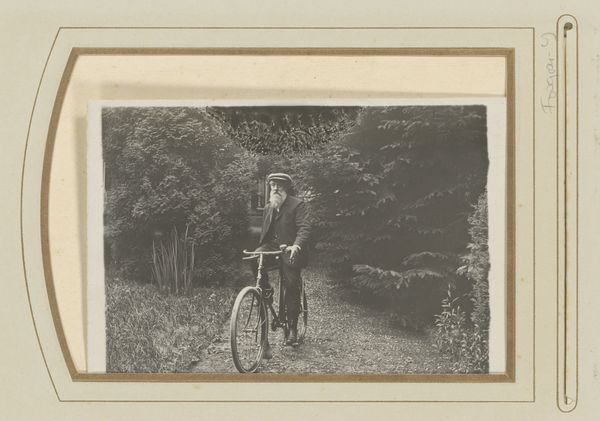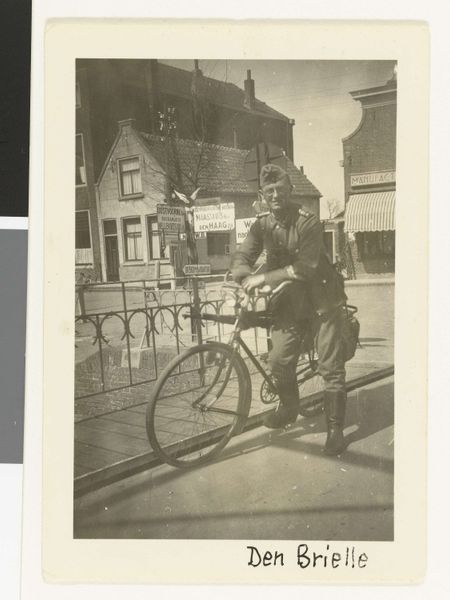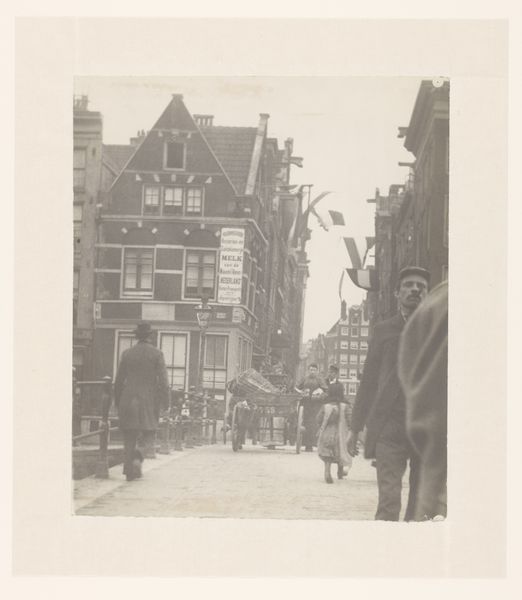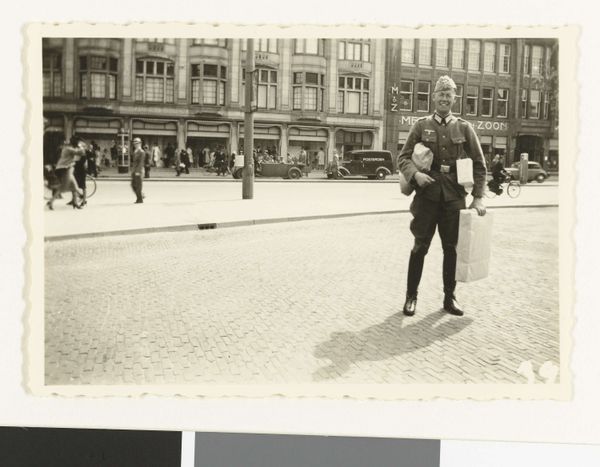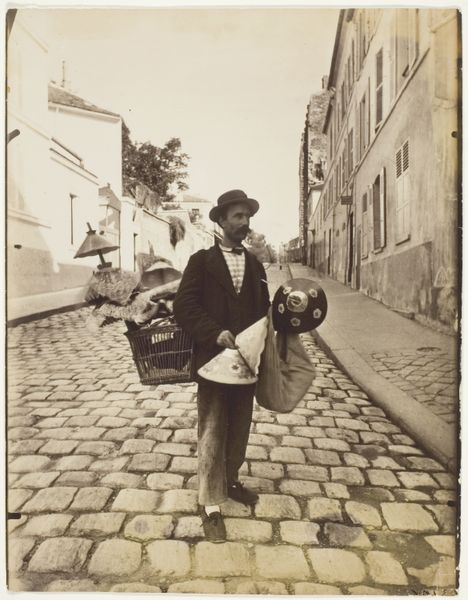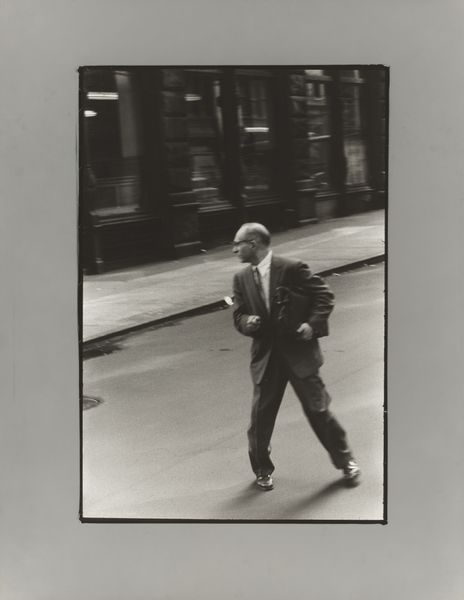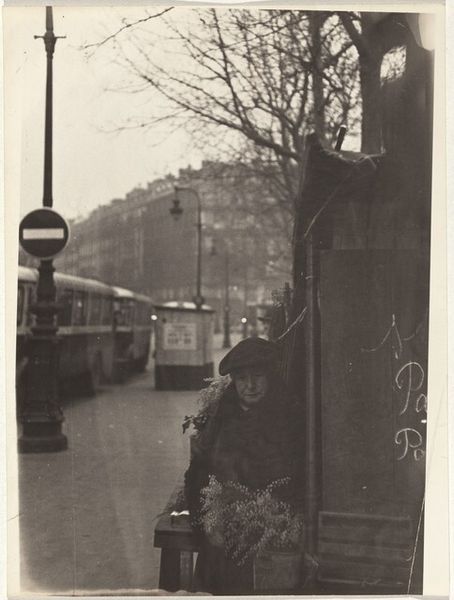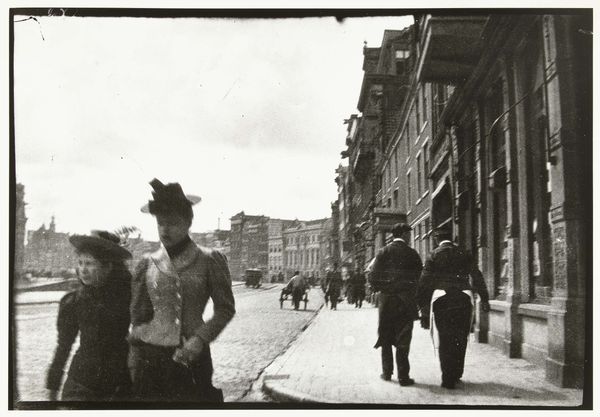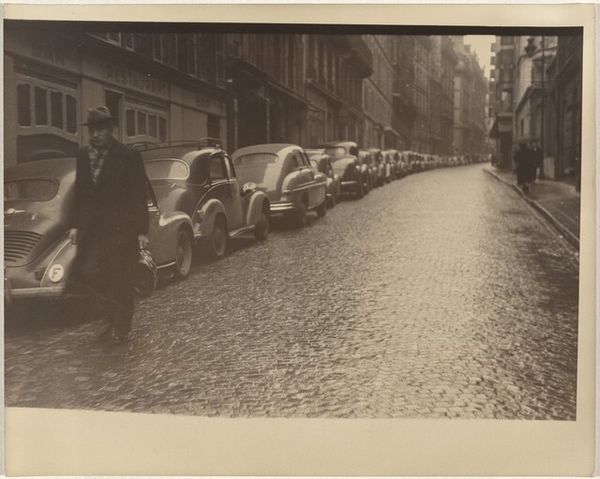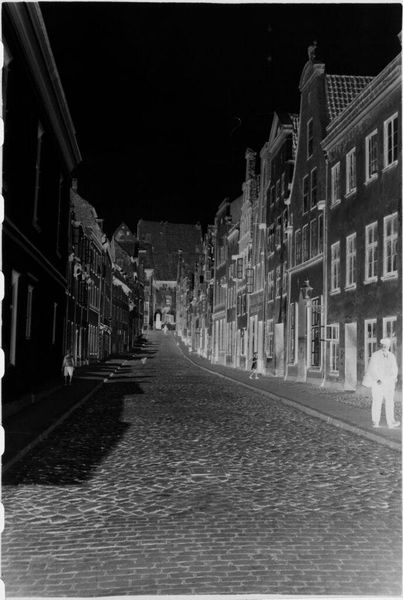
Dimensions: height 50.5 cm, width 40.0 cm, height 40.0 cm, width 27.4 cm
Copyright: Rijks Museum: Open Domain
George Hendrik Breitner made this photograph of a cyclist on the Keizersgracht in Amsterdam, using a glass negative. This was a relatively new technology at the time. Looking closely, the image isn't just about capturing a scene; it's about how Breitner used the photographic process to explore a gritty, real-world view. Notice how the cobblestones and buildings are rendered with such a focus on detail, and how the light interacts with the surfaces. This was achieved through careful development of the glass negative. Photography, unlike painting or sculpture, has an inherent connection to the industrial age and the culture of mass production. Breitner’s choice to photograph everyday life, rather than romanticized or staged scenes, places the artwork in the context of social realism, a move away from traditional art subjects. The labor involved isn’t just artistic; it’s tied to the labor of industrial production, the manufacturing of cameras, lenses, and photographic materials. Breitner’s decision to use photography challenges the traditional hierarchy between fine art and the more accessible medium of photography, inviting us to consider the social and economic context in which art is made and consumed.
Comments
No comments
Be the first to comment and join the conversation on the ultimate creative platform.

